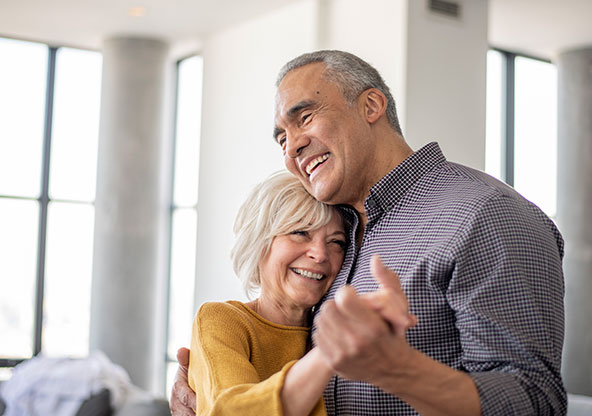How to Heal Hip Bursitis Quickly
What is Hip Bursitis?
Hip bursitis is an inflammatory condition caused by overuse or injury to the bursa. The bursas are fluid-filled sacs between your bones, muscles, and tendons that cushion your joints. When these bursas become inflamed, it can cause pain, tenderness, and difficulty moving the hip. Common causes of hip bursitis include:
- Repetitive motion (running or squatting)
- Direct trauma to the hip joint
- Sitting for long periods
- Infection
Those with health conditions such as arthritis, gout, diabetes, or a weakened immune system are also at risk.
When to See a Medical Doctor
If you are experiencing pain and discomfort from hip bursitis that is not improving, seek medical help. You should see a doctor if:
- The pain persists for more than two weeks or gets worse over time
- Your hip joint is swollen or red
- You have trouble with day-to-day activities, such as walking or climbing stairs
- You have a fever or chills
- Your range of motion is limited
- You are unable to bear weight on the affected hip joint
Quickest Ways to Heal Hip Bursitis
Rest
The quickest way to heal hip bursitis is to rest and reduce pressure on the area. Avoid any activities or exercises that cause pain in the joints. Resting can help reduce pain and inflammation, promote healing, and prevent further injury or irritation to the affected area. Rest allows your body to focus its energy on healing rather than physical activity. You may need to combine rest with other treatments such as physical therapy exercises, medications, and lifestyle changes.
Ice therapy
Ice therapy is one of the most effective treatments for hip bursitis. Ice can reduce inflammation and decrease pain to help you return to your regular activities faster.
Applying ice to the affected area several times a day is recommended. It should be done for at most 20 minutes at a time.
Take breaks between applications so the skin does not become too cold and numb. Using a cloth or wrap to cover the ice can help protect your skin from frostbite.
Heat therapy
Heat therapy is widely used to treat hip bursitis and can effectively reduce inflammation and ease pain. The heat helps relax muscles, which can help reduce tension in the affected area and relieve stiffness in the joint.
Heat also increases circulation, bringing oxygen-rich blood to the area and aiding healing. Applying heat for 15 to 20 minutes can alleviate pain and discomfort.
Take breaks between heat applications because too much heat could worsen symptoms.
You can alternate between heat and ice therapy for effective treatment.
Medications
Anti-inflammatory medications such as ibuprofen or naproxen can help.
A steroid injection directly into the bursa sac may reduce pain and inflammation quickly. These should be taken under the supervision of a physician.
A doctor may prescribe stronger pain relievers or inject a corticosteroid directly into the bursa to reduce inflammation.
Exercises
Physical therapy exercises may also help strengthen the muscles around the joint and improve flexibility as part of a comprehensive rehabilitation program.
Pressure is alleviated off the bursa to help reduce pain and inflammation.
A doctor or physical therapist can prescribe specific exercises to help the patient’s needs.
Strengthening exercises such as bridges, clamshells, lateral leg lifts, squats, and wall squats can help improve hip strength. It can also reduce the risk of further bursitis pain or flare-ups.
Stretching exercises such as hip flexor, piriformis, and IT band stretches can help keep muscles loose and flexible.
Working with a physical therapist can guide other lifestyle modifications. It can help improve the healing process and reduce hip bursitis symptoms.
Chiropractic care
A chiropractor will first take a complete health history to determine the best course of treatment. Treatment is tailored to each patient, depending on their condition and symptoms. Common joint treatments through chiropractic care include:
- Manual manipulation of the hip joint
- Stretching exercises
- Postural adjustments to correct any alignment issues
- Cold therapy to reduce inflammation and pain relief
- Joint mobilization techniques to improve range of motion
- Electrical stimulation or ultrasound to help relax muscles
These treatments can improve mobility, reduce tension in the affected area, and help alleviate pain.
Chiropractic massage therapy
Massage therapy helps reduce pain, increase the range of motion, and promote healing in the affected area. It also helps reduce inflammation and scar tissue formation.
Therapists use specific techniques to target areas of tension, improve circulation, and decrease muscle spasms. This is done to prevent further irritation of the bursa.
Massage therapy can help improve posture and gait to reduce stress in the affected area.
Sleep
Yes, getting adequate sleep is essential for treating hip bursitis. Quality sleep can help reduce inflammation and pain associated with bursitis. It can help boost immunity and allow your body to heal faster.
Getting 7-9 hours of quality sleep per night helps when healing from hip bursitis.
Sitting
People with hip bursitis should use proper body mechanics when sitting.
Keep your lower back straight, and your hips and knees bent at a 90-degree angle when sitting.
Try to minimize twisting or turning when seated. Take frequent breaks from sitting. Stand up and stretch and move around throughout the day.
Using a cushion or pillow to support the bursa may help provide relief while sitting.


